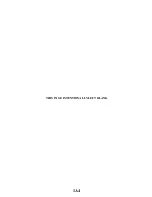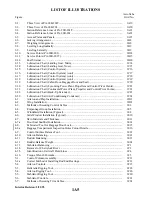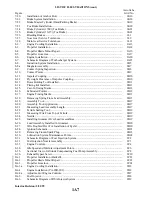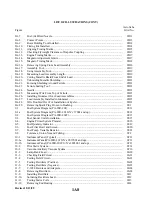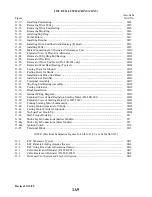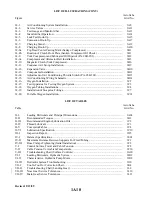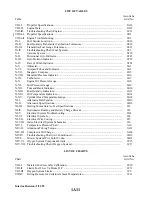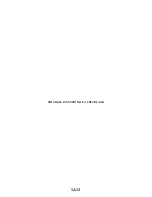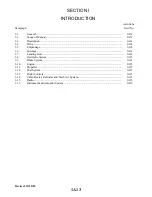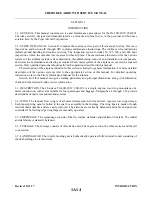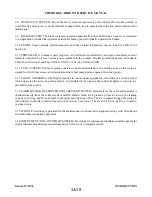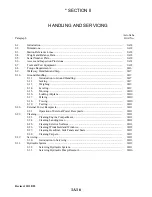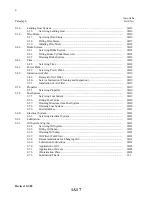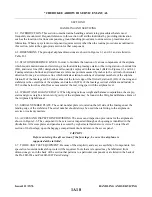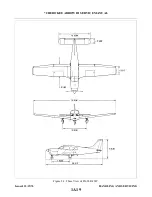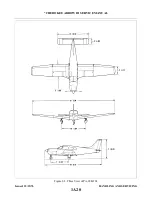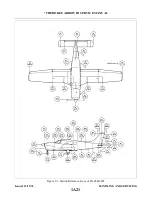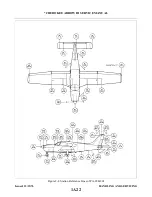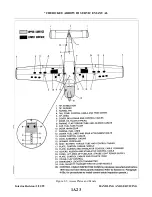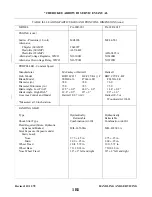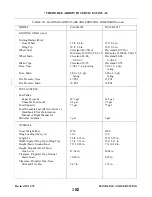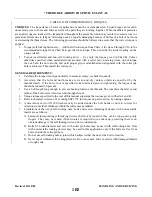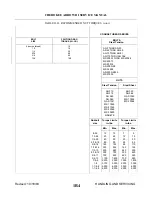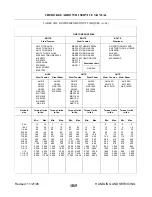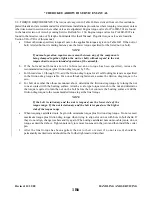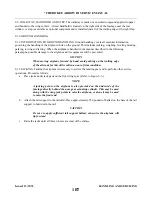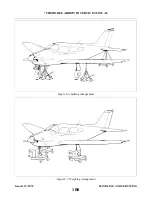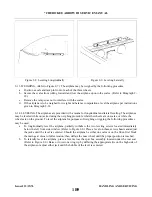
SECTION II
HANDLING AND SERVICING
2-1. INTRODUCTION. This section contains routine handling and servicing procedures that are most
frequently encountered. Frequent reference to this section will aid the individual by providing information
such as the location of various components, ground handling procedures, routine service procedures and
lubrication. When any system or component requires service other than the routine procedures as outlined in
this section, refer to the appropriate section for that component.
2-2. DIMENSIONS. The principal airplane dimensions are shown in Figures 2-1 and 2-2 and are listed in
Table II-I.
2-3. STATION REFERENCE LINES. In order to facilitate the location of various components of the airplane
which require maintenance and servicing, a method utilizing fuselage station (Sta.) wing station or buttock line
(BL), and water line (WL) designations is frequently employed in this manual. (Refer to Figures 2-3 and 2-4.)
Fuselage stations, buttock and water lines are reference points measured by inches in the vertical or horizontal
direction from a given reference line which indicates station locations of structural members of the airplane.
Station O of the fuselage is 44.5 inches ahead of the lower edge of the firewall; station O (BL) of the wing and
stabilator is the centerline of the airplane; and station O (WL) of the fuselage vertical stabilizer and rudder is
20.5 inches below the cabin floor as measured at the rear wing spar with the airplane level.
2-4. WEIGHT AND BALANCE DATA. When figuring various weight and balance computations, the empty,
static and gross weight, and center of gravity of the airplane may be found in the Weight and Balance Form of
the Airplane Flight Manual.
2-5. SERIAL NUMBER PLATE. The serial number plate is located on the left side of the fuselage near the
landing edge of the stabilator. The serial number should always be used when referring to the airplane on
service or warranty matters.
2-6. ACCESS AND INSPECTION PROVISIONS. The access and inspection provisions for the airplane are
shown in Figure 2-5. The component to be serviced or inspected through each opening is identified in the
illustration. All access plates and panels are secured by eigher metal fasteners or screws. To enter the aft
section of the fuselage, open the baggage compartment door and remove the access panel.
CAUTION
Before entering the aft section of the fuselage, be sure the airplane is
supported at the tail skid.
2-7. TOOLS AND TEST EQUIPMENT. Because of the simplicity and easy accessibility of components, few
special tools outside normal shop tools will be required. Tools that are required may be fabricated from
dimensions given in the back of the section that pertains to a particular component or are listed in the back of
the PA-28R-201 and PA-28R-201T Parts Catalog.
Issued: 12/15/76
1A18
*CHEROKEE ARROW III SERVICE MANUAL
HANDLING AND SERVICING
Summary of Contents for ARROW III
Page 4: ...THIS PAGE INTENTIONALLY LEFT BLANK 1A4...
Page 12: ...THIS PAGE INTENTIONALLY LEFT BLANK 1A12...
Page 94: ...Figure 4 2 Wing Installation Revised 2 13 89 1D22 CHEROKEE ARROW III SERVICE MANUAL STRUCTURES...
Page 171: ...lH3 INTENTIONALLY LEFT BLANK...
Page 172: ...lH4 INTENTIONALLY LEFT BLANK...
Page 286: ...THIS PAGE INTENTIONALLY LEFT BLANK Revised 2 13 89 2A8...
Page 528: ...INTENTIONALLY LEFT BLANK 2K10 THRU 2L24 2K10...

